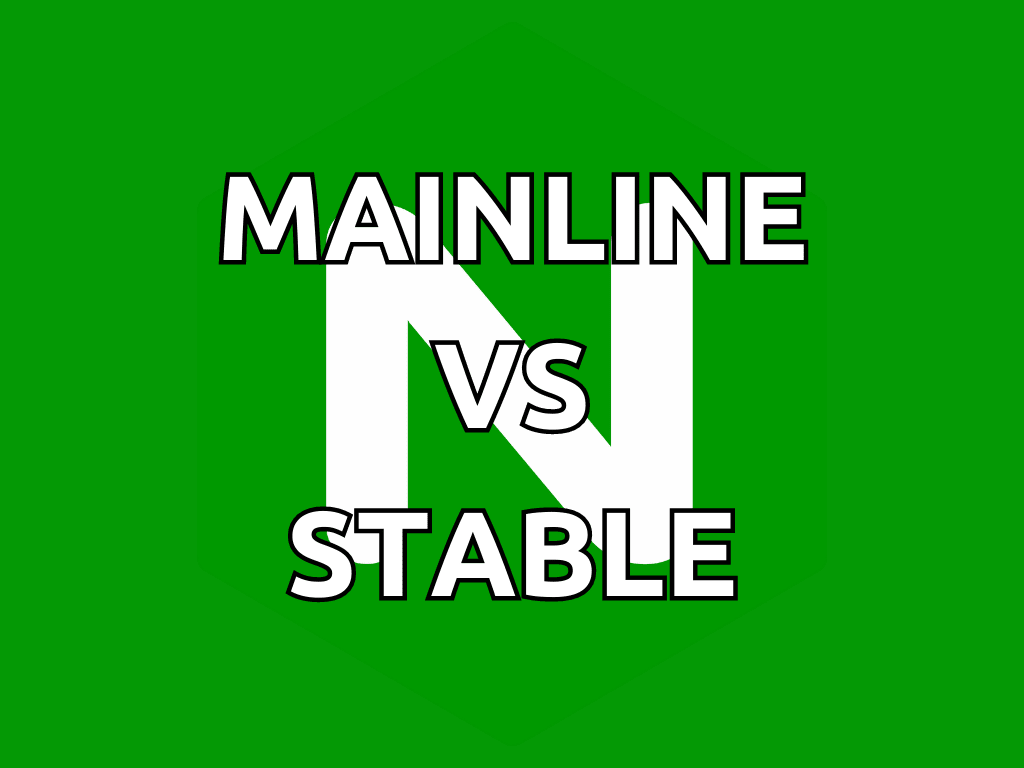This article will discuss the differences between the Nginx Mainline and Stable versions, their pros and cons, and how to choose the right version for your specific needs. We will also provide an overview of Nginx’s history and core features.
Introduction to Nginx
Nginx is a versatile, high-performance open-source web server and reverse proxy server. It has gained popularity for its ability to efficiently handle a large number of concurrent connections, making it an ideal choice for high-traffic websites and applications.
Brief History of Nginx
Nginx pronounced as “engine-x,” was created by Igor Sysoev in 2002. The primary motivation behind its development was to address the C10k problem – the challenge of handling 10,000 concurrent connections on a single server. Over the years, Nginx has evolved into a robust solution for various use cases, including load balancing, SSL termination, and API gateway.
Core Features of Nginx
Some of the notable features of Nginx include:
- Efficient handling of static content
- Load balancing for increased reliability and performance
- SSL termination for secure communication
- Reverse proxy capabilities for increased control over traffic flow
- Modular, event-driven architecture for optimal resource usage
Now that you have a basic understanding of Nginx, let’s dive into the core topic: the differences between Nginx Mainline and Stable.
Nginx Mainline vs Stable
Nginx Mainline
The Nginx Mainline version is the actively developed branch with the latest features, enhancements, and bug fixes. It is typically safe for production use and receives regular updates from the developers.
Pros of Mainline
- Access to cutting-edge features and enhancements
- Frequent updates, including bug fixes
- Can be more suitable for specific use cases that require the latest functionality
Cons of Mainline
- Potential stability issues due to the introduction of new features
- May require more frequent updates and maintenance
Nginx Stable
The Nginx Stable version is the branch designed specifically for production environments. It receives critical bug fixes and security updates but doesn’t include the new features and enhancements found in the Mainline version.
Pros of Stable
- Greater stability and reliability
- Lower risk of encountering unexpected issues
- Well-suited for production environments with critical applications
Cons of Stable
- Does not include the latest features and enhancements
- Updates are less frequent compared to Mainline
How to Choose Between Mainline and Stable
Consider Your Use Case
Think about the specific requirements of your application or website. If you need the latest features or your use case demands cutting-edge functionality, Mainline might be the better choice. On the other hand, if you prioritize stability and reliability, the Stable version is likely the way to go.
Weigh the Pros and Cons
As we’ve discussed, there are advantages and disadvantages to both Mainline and Stable. Carefully consider these factors to make an informed decision based on your unique needs and priorities.
Community Support and Resources
When choosing between Mainline and Stable, also consider the available community support and resources. Both versions have an active community that can help you troubleshoot issues and offer guidance. However, the Mainline version might have a more extensive resource base for newer features, while the Stable version may have more mature, time-tested solutions.
Conclusion: Nginx Mainline VS Stable
The choice between Nginx Mainline and Stable ultimately depends on your specific needs, priorities, and risk tolerance. While the Mainline version offers the latest features and frequent updates, it may be slightly less stable than the Stable version, which prioritizes reliability and security. By considering your use case, weighing the pros and cons, and evaluating community support and resources, you can make an informed decision that best suits your unique situation.
Additional Resources and Links
To learn more about Nginx and its various features, refer to the following resources:
- Nginx Official Documentation
- Nginx Beginner’s Guide
- Nginx Community Forum
- Nginx Blog
- Nginx on GitHub
By exploring these resources, you can better understand Nginx, its capabilities, and best practices for implementation and maintenance. Remember that both Mainline and Stable versions have their own strengths and weaknesses, so choose the one that best aligns with your specific needs and requirements.

